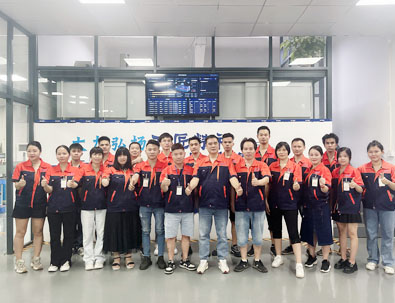The rivet should be drilled with a rivet gun. First, punch holes in the object to be connected, then put rivets in, and then rivet the rivet gun.
Rivet: In riveting, the parts of the riveted part are connected by their own deformation or interference. There are many types of rivets, and they are informal. Common semi-round rivet, flat rivet, countersunk rivet, half tubular rivet, solid rivet, rivet, step rivet and so on. Flat rivets are used for riveting applications under normal loads.
For example, if you are riveting two iron plates with 3.2X10 flat head aluminum rivets, drill a through hole in both iron plates with a 3.3 bit first, then insert the thick end of the rivets into both plates. Then use the rivet gun's guide to insert the rivet into the thin ends of the two iron plates and pull the handle of the rivet gun until the end of the rivet is broken off, so that the thick end of the rivet has deformed into two iron plates firmly connected
Rivet pulling usually has no crack problem.
Cracking is often a problem when riveting semi-hollow or solid rivets:
Material problems, rivet should be selected special rivet line.

In the semi-hollow concentric circle problem, the different cores of the semi-hollow will also break.
The cut of the rivet head is very uneven.
The hole punch is not aligned with the center of the rivet.
What is the surface treatment method?
Electroplating: The stainless steel rivet member to be electroplated is immersed in an aqueous solution containing deposited metal compounds, and the metal to be electroplated is deposited and deposited on the member by an electric current flowing through the electroplating solution. Usually, electrogalvanizing, copper, nickel, chromium, copper and nickel alloys, and sometimes also including black (blue), phosphating treatment, etc.
Hot dip galvanizing: by dipping carbon steel parts into a molten galvanizing bath of about 510°C. As a result, the iron-zinc alloy on the surface of the steel plate gradually turns into passivated zinc on the outer surface of the product. Hot dip aluminum plating is a similar process.
In the plating process, the coated metal will be deposited unevenly on the edge, resulting in a thicker coating around the corner. In the threaded part of the fastener, a thicker coating is placed on top of the thread, tapering along the thread side, thus deposing a thinner coating on the bottom of the tooth. Instead, a thicker coating is deposited on the inner thread corner and the bottom of the thread.
Mechanical coatings have the same tendency to deposit as hot-dip coatings, but are smoother and located at the bottom of the teeth. More uniform thickness throughout the surface






